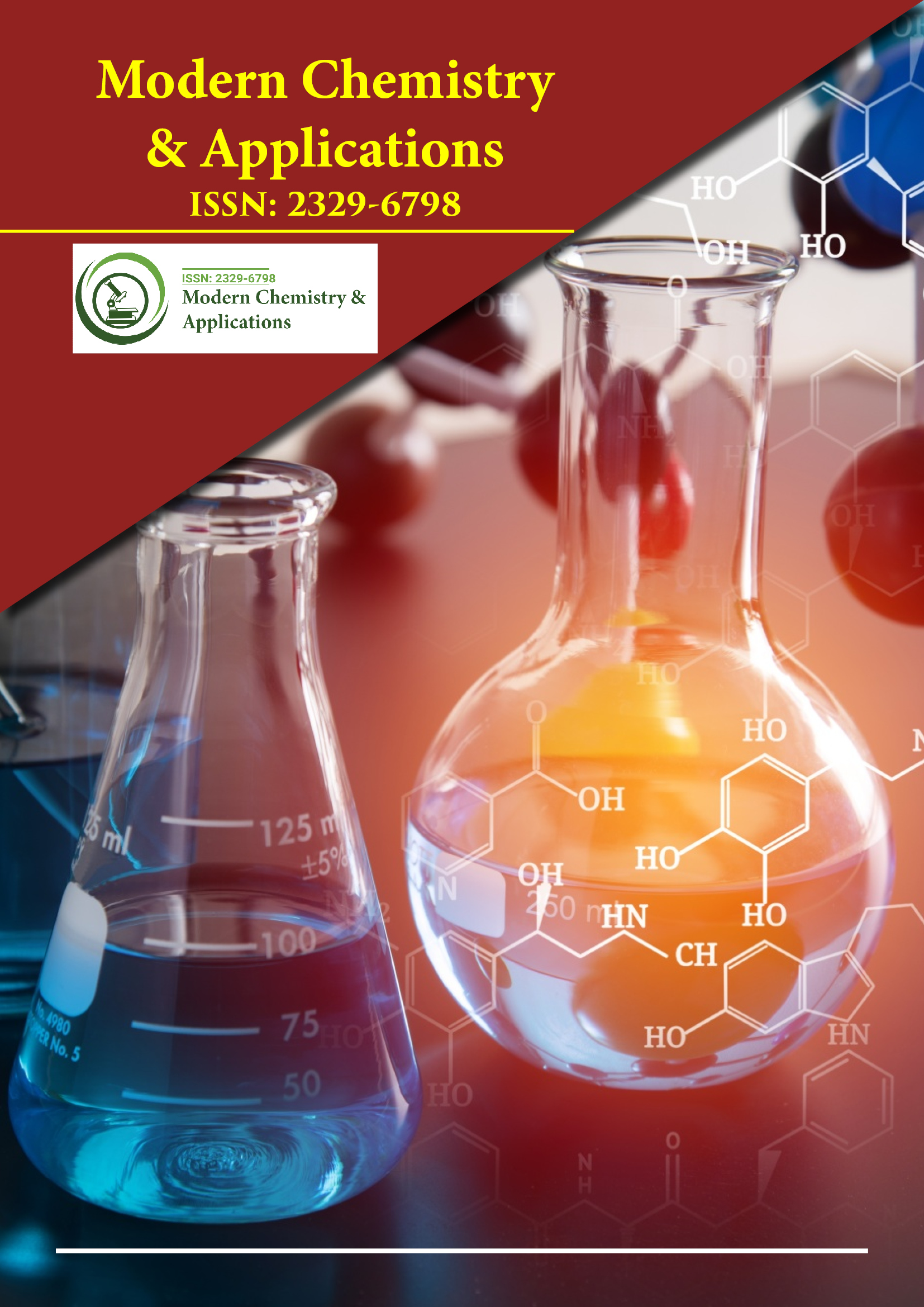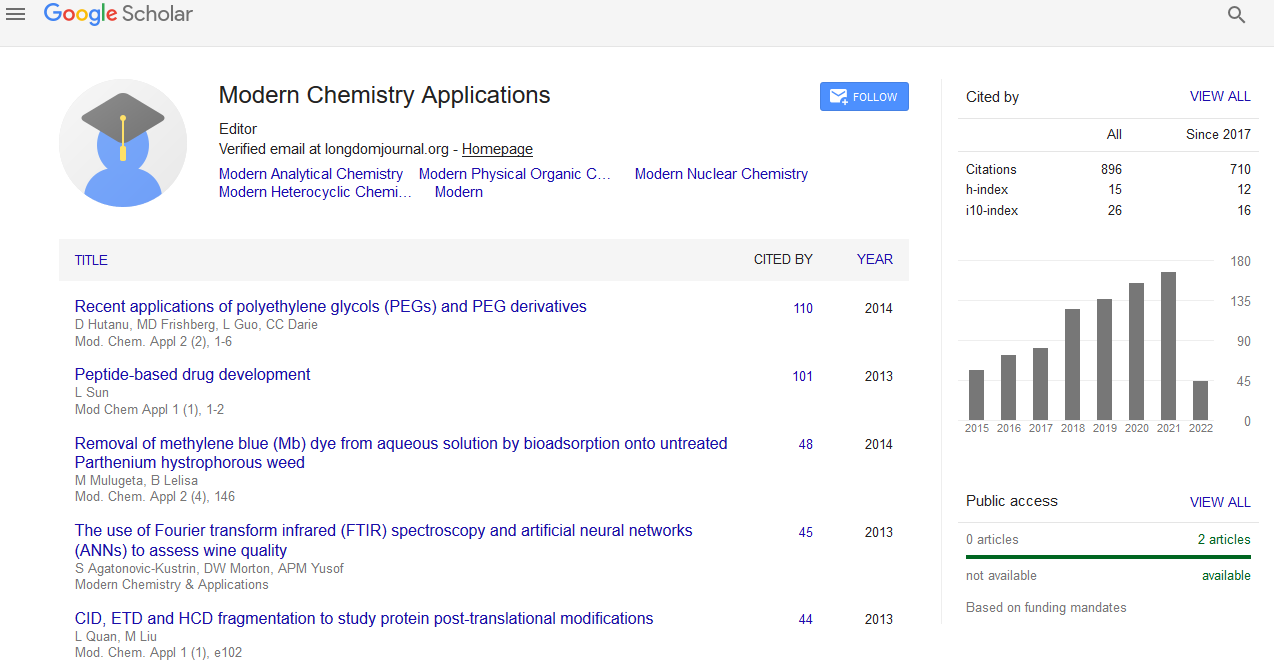Indexed In
- Open J Gate
- JournalTOCs
- RefSeek
- Hamdard University
- EBSCO A-Z
- OCLC- WorldCat
- Scholarsteer
- Publons
- Geneva Foundation for Medical Education and Research
- Google Scholar
Useful Links
Share This Page
Journal Flyer

Open Access Journals
- Agri and Aquaculture
- Biochemistry
- Bioinformatics & Systems Biology
- Business & Management
- Chemistry
- Clinical Sciences
- Engineering
- Food & Nutrition
- General Science
- Genetics & Molecular Biology
- Immunology & Microbiology
- Medical Sciences
- Neuroscience & Psychology
- Nursing & Health Care
- Pharmaceutical Sciences
Synthesis, spectroscopic and structural analysis with electron density distribution of (-)-cytisine and its derivatives
5th Global Chemistry Congress
September 04-06, 2017 | London, UK
Anna K Przybyl, Agata Owczarzak, Dominika Golowin and Maciej Kubicki
Adam Mickiewicz University in Pozna┼?, Poland
Posters & Accepted Abstracts: Mod Chem Appl
Abstract:
Statement of the Problem: (-)-Cytisine (1, Scheme 1) is an alkaloid, naturally occurring in plants of the Leguminosae family. It interacts with nAChRs and has been applied in investigation of the central nervous system. Moreover, cytisine derivatives have been tested for their use in the treatment of AlzheimerÔ??s and ParkinsonÔ??s diseases. This alkaloid has been found to moderately increase the concentration of dopamine alleviating the symptoms of nicotine deprivation. Therefore, cytisine and its derivative (varenicline) have been employed in nicotine withdrawal therapy. Some N-derivatives of (-)-cytisine show analgesic, antidepressant, anti-inflammatory, hypoglycemic and hypertension reducing properties. Methodology & Theoretical Orientation: (-)-Cytisine was isolated from the seeds of Laburnum anagyroides. The modifications were made with alkane dibromide or BTC/amines/diamines. The products were separated by flash chromatography. Structural data were collected using Rigaku diffractometers: Supernova with Atlas detector and Excalibur E. The NMR spectra were measured on NMR Bruker Advance II 600 MHz. Findings: Biological activity of (-)-cytisine is related to the presence of pyridone ring A and piperidine ring C. Such structure also permits obtaining a number of derivatives with biological activity even greater than that of cytisine itself. It has been found that modifications of the molecular structure change the pharmacological properties including the affinity to certain nAChR subtypes. We decided to use the high-resolution X-ray diffraction method which allows for experimental determination of the details of the electron density distribution in molecular crystals and brings the details of e.g. electrostatic potential and dipole moments that are the features underlying the biological action. Conclusion & Significance: (-)-Cytisine is an excellent substrate in syntheses of the adducts in which other molecules can be bonded to cytisine through N-12 of piperidine ring C (Scheme 1). The hybrid compounds of this type often show much better therapeutic properties than the parent ones. Additionally basing on the relation of the electronic/energetic features with the biological activity, it should be in future possible to design more potent compounds and even to build the pharmacophore model.
Biography :
Anna K Przyby┼? completed her Graduation in Chemistry at Adam Mickiewicz University in Pozna┼?, Poland. In 2000, she received her PhD degree from the same institution under the supervision of Prof. Waleria Wysocka. She was a Post-doctoral fellow at National Institutes of Health, NIDDK, Laboratory of Medicinal Chemistry, Bethesda, MD, USA (2001–2003), under the supervision of Dr. Kenner C Rice. In 2015, she obtained her Habilitation degree. She is currently an Associate Professor at Adam Mickiewicz University, Pozna┼?. Her scientific interests include natural products, especially alkaloids, modern organic synthesis and medicinal chemistry. Her research focuses on modification of quinolizidine alkaloids, in particular transformations into conjugated systems, enantiomer separation and structure analysis.


